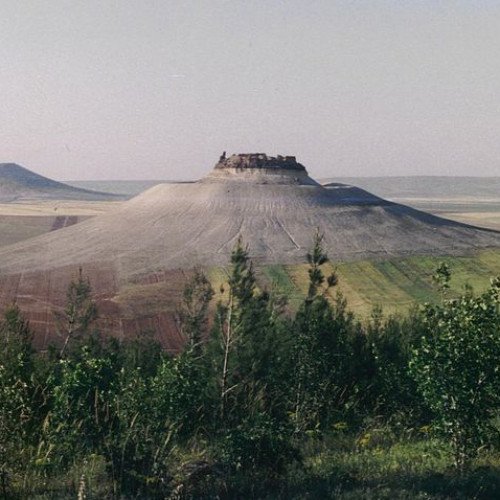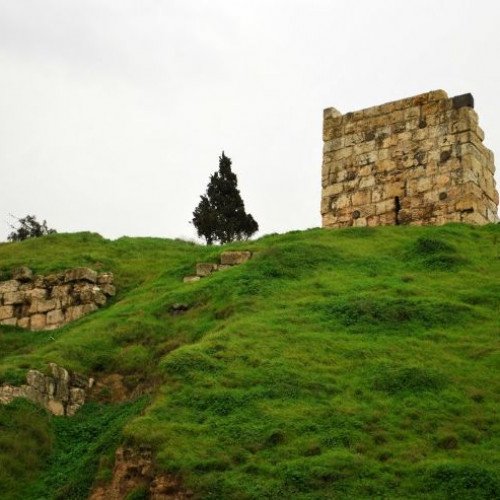Castles of "Syria" SHMEMIS vs CITADEL OF HOMS

SHMEMIS
Shmemis (Arabic: قلعة شميميس) also ash-Shmemis, ash-Shmamis) is a castle located 3 km north west of Salamiyah and 30 km south east from Hama. The castle (Qalat Shmamis) was first built, on top of an extinct volcano, in the 1st century BC by Sampsiceramus I, the first Priest King of the Royal family of Emesa. Most of the original structure was subsequently destroyed by an earthquake. It was later destroyed by the Persian king Khosrau II in AD 613. It was rebuilt in AD 1229 by Assad ud-Din Shirkoh, an Ayyubid governor of Homs. The castle was rebuilt by the Ayyubid Cherkouh. The date of this reconstruction was set by Abu Fida in 626 e (1228), while Muhammad Kurd Ali in his book "al-Sham Plans" fixed the 627th (1229). However, the Mongols destroyed it in 1260 and then by the Tatars in 1401. It was rebuilt after the expulsion of the Mongols and Tatars from Syria. The castle today is in ruins with only walls partially preserved. This castle was built on a basaltic layer covering a conical top of the mountain. This summit is surrounded by a moat 15 m depth, and provides a very deep well to meet the water needs for the castle, and another well for supplies. The walls of the latter well were covered with a layer of lime and sludge. The castle housed the royal palace, as well as foundations for housing soldiers. The importance of this castle is due to its location which allows to observe a circular area of more than 50 km in diameter.
Statistics for this Xoptio

CITADEL OF HOMS
The Citadel of Homs, also known as Homs Castle or Qalaat Homs (Arabic: قلعة حمص), is a historic building now mostly ruined in Homs, Syria. The citadel was built on top of an ancient tell southwest of the Old City, with remains dating back to the 3rd millennium BCE. The citadel is locally known as the "Citadel of Usama", named after Usama ibn Munqidh. Julia Domna, daughter of the high-priest Julius Bassianus, has contributed to improve the city of Emesa and its citadel during the Roman Syria era. At that time, the citadel was able to contain accommodation, warehouses and administrative buildings surrounded by semi-circular walls. However, today the Citadel is in ruinous state as a result of massive demolition started by the Egyptian army of Ibrâhîm Pasha in the 1830s. This was followed by leveling and extensive new construction carried out when the site was used as a military base by the French army during the Mandate period and thereafter by the Syrian army. The Citadel was only abandoned for military purposes in the late 1980s when it passed to the Directorate-General of Antiquities and Museums.